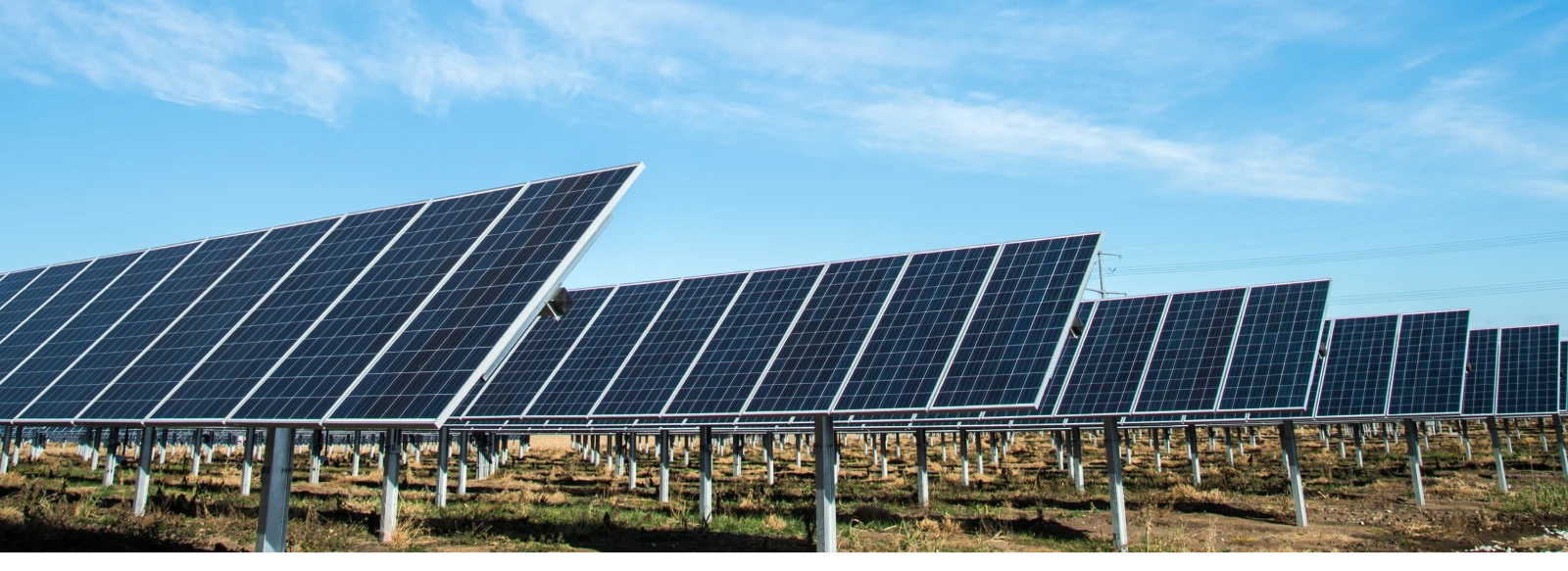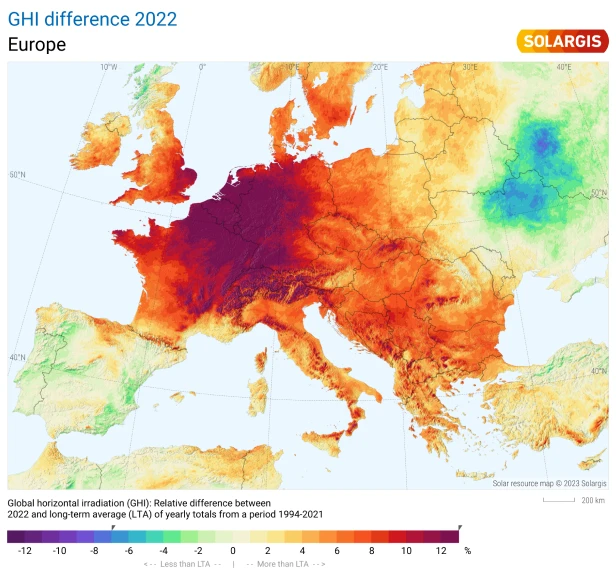The solar radiation that reaches the Earth's surface consists of three components: direct, diffused, and reflected radiation. The sum of these three components is called global radiation
In solar engineering, the following parameters are commonly used:
- Direct Normal Irradiation/Irradiance (DNI)
- Global Horizontal Irradiation/Irradiance (GHI) is the sum of direct and diffuse radiation received on a horizontal plane
- Global Tilted Irradiation/Irradiance (GTI) is the sum of direct and reflected radiation received on a surface with defined tilt and azimuth
SOLARGIS uses a semi-empirical satellite calculation model to obtain radiation data. Using state-of-the-art algorithms, the satellite data is used to calculate the properties of cloud movement, mathematical weather modeling is also used.
The mathematical model is constantly correlated with satellite data to improve forecasting accuracy.
The solar radiation retrieval is basically split into three steps:
- First, the clear-sky irradiance is calculated using the clear-sky model
- Second, direct normal and global horizontal radiation is calculated based on the satellite data and cloud index to retrieve all-sky irradiance
- Third, direct normal and global horizontal irradiance are used for computing diffuse and global tilted irradiance and/or irradiance corrected for shading effects
At different stages of modeling and calculations, many factors that affect the generation are taken into account. The energy losses can be classified in two groups:
- Static: module surface pollution, losses in cables, and mismatch between PV modules
- Dynamic: these losses depend on the irradiance/temperature conditions, which change over the day and over the seasons
The numerical model takes into account the following losses:
- Global irradiation impinging on a tilted plane of PV modules is calculated from Global Horizontal Irradiance (GHI), Direct Normal Irradiance (DNI), terrain albedo, and instantaneous sun position within subhourly time interval
- Shading by terrain features is calculated by disaggregation using SRTM-3 DEM and horizon height
- Losses due to angular reflectivity: The magnitude of effects depends on relative position of the sun and plane of the module. The accuracy of calculations of angular reflectivity losses depends on cleanness and specific properties of the module surface
- Losses due to snow: Losses of solar radiation during winter months are increased by snow on the modules. Typically snow remains on the modules surface from the morning hours to the noon. The highest negative impact on the production has snowfall during cold, cloudy days, when the temperature of the modules is not high enough to melt the snow
- Losses due to dirt and soiling
- Losses due to modules operating outside of standard test conditions (STC): depends mainly on the environmental factors and cleaning of the PV modules surface during the power plant lifetime. Typically the losses at this step are higher for crystalline silicon modules than thin films
- Losses by inter-row shading: Relative spacing leads to electricity losses due to short distance shading
- Power tolerance of modules: From the module power tolerance result bigger or smaller mismatch losses of the modules connected in strings
- Inverter losses
- Inverter losses from conversion of DC to AC
- Simple solar power plant (repair and maintenance)
- Long-term degradation of modules
As part of the annual forecasting package, the customer is regularly provided with the following data parameters:
- csv-files containing the following data for 7-14 days in advance:
- PV electricity output (PVOUT) – P50, MW/h
- Global horizontal irradiance/irradiation, GHI, kW/m2
- Global tilted irradiance/irradiation, GTI, kW/m2
- Direct normal irradiance/irradiation, DNI, kW/m2
- Air temperature at 2 m, TEMP
- Wind speed at 10 m, WS, m/sec
- Wind direction at 10 m, WD
- Relative humidity, RH, %
- Atmospheric pressure, AP, hPa
- Precipitation rate, PREC, mm or kg/m2
- hourly adjustments to forecast data
- automated data transfer to the Customer via API or uploading data to a secure FTP server
A free trial period is available for new customers who have not yet had experience of using the company's products.
All data is processed on SOLARGIS's own servers, no additional equipment is required from the Customer.

























